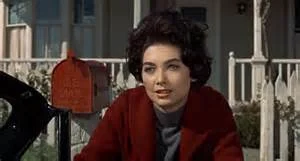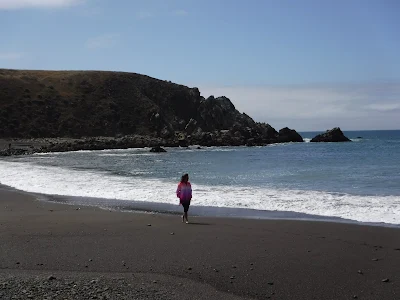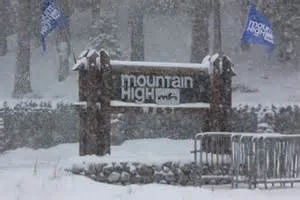 |
| An unexpected hit which helped the Horror genre |
Director Alfred Hitchcock’s first attempt at a
horror movie, actually a precursor to that genre in the future, proved to be a
mighty success. The film received a Rotten Tomatoes approval rating of 96% with
the comment; “Proving once again that build-up is the key to suspense,
Hitchcock successfully turned birds into some of the most terrifying villains
in horror history”.
From the folks of Rotten Tomatoes – that was quite a
compliment. Hitchcock had a flying success – yes the pun was intended.
We at J and L believe that there is not a person
alive who once had the chance to view the film ‘The Birds’ hasn’t had at some
time in their life a slight sense of apprehension when noticing a grouping of
winged creatures alighted on telephone lines.
“Just birds.” Yeah, but looking over the shoulder
cannot be stopped. Hitchcock, you truly scared us with that gem – thanks a lot!
 |
| Nothing wrong here, move on without fear - if you can??? |
Alfred came up with the idea after reading a novella
by Daphne du Maurier “The Birds” which actually takes place in Cornwall,
England right after World War II and was published in 1952. Along with the
writing by du Maurier a slight disturbance had gotten the director’s attention
in 1961 in the town of Capitola, California. On August 18, 1961 the
residents suddenly found their small town being ‘attacked’ by thousands of
birds who were flinging or flying themselves to death against windows, rooftops
and anywhere else they could spread their wings for the last time. A local
newspaper in Santa Cruz wrote that the citizens believed the birds of demise
were possessed by demons or perhaps drugs – it was the sixties after all.
Anyway, Hitchcock had an epiphany– that’s how genius directors think – death,
disaster, scared people all equal to a hit film.
Roll the celluloid!
Hitchcock hired Evan Hunter in September of 1961 to
write the script after working with him on earlier projects and knew her style
well as she knew what her boss wanted also. They worked together and finished the
script.
Now for the actors:
 |
| The always famous cameos of Alfred Hitchcock |
Now for the actors:
A good looking lead male – Rod Taylor as Mitch
Brenner hit the mark as the handsome attorney from San Francisco who made it a
tradition to be home with his widowed mother and younger sister every weekend
in Bodega Bay.
An attractive leading lady – Tippi Hedren as Melanie
Daniels truly made the right statement as a beautiful and spoiled socialite
from San Francisco who happened to bump into ‘Mitch’ in a bird shop in San
Francisco (coincidence) and decided he was to be her next boy toy – so a short
drive to Bodega Bay in her silver Aston Martin convertible wouldn’t be such a
problem. Really, watch your hairdo ‘Melanie’!
The rest of the cast – Jessica Tandy (as Mitch’s
mother), Suzanne Pleshette (as Mitch’s platonic friend – yeah), Veronica
Cartwright (as Mitch’s younger sister), and the others were more than enough
talent to get the point across to the audience – these were real people living
in a small oceanside town seventy miles north of San Francisco and they were
scared out of their minds with the winged demons dive bombing anything that
moved. Poking heads and eyes with their pointed beaks made movie viewers scream
in the plush seats and look into the skies as they left the movie theaters.
 |
| What every woman wears in a boat - a mink coat! |
As stated earlier – once viewed, once warned.
Now, this is Hollywood after all so reality has a
lot of help from fantasy and trickster maneuvers. The actual shooting of the
Potter School House, the church and the children running from the birds – as
well as the wonderfully attractive shot of Suzanne Pleshette sans eyeballs was
actually filmed in the town of Bodega which is five miles southeast of Bodega
Bay. An inland tiny town which fit what Hitchcock and Hunter envisioned as the
perfect look.
Bodega Bay was used for filming other integral parts
of the film including the rather sad but funny scenes in the Tide Water Bar
where the patrons were eating, drinking and thinking why were the birds acting
so aggressively. Ethel Griffies, who played ornithologist Mrs. Bundy poo-poos
the ideas of birds being nasty to everyone in the establishment when in the
next instance birds are on a free-for-all swooping here and there tearing the
eyeballs out of anyone on the street.
 |
| Suzanne Pleshette with eyes - for now before the angry birds |
“Oops, my bad,” she retorts after looking out the
window and seeing a man being blown up at the gas station across the street
after a gangster bird came in low and took him out.
Okay, perhaps that’s not how it truly was in the
script but could be if a sequel was made today.
 |
| Right - very friendly birdies! |
The rest of the film had various smaller locations
and the special effects were created at Disney Studios but it was and is Bodega
Bay which will always be the place where birds lost their minds and beat the
daylights out of humans for a couple of days. That’s all it took to make a
legend – two days of ducking, diving, scratching, and poking to put a town into
the annuals of movie history.
 |
| How the school and church look from the same angle today |
J and L, on our trip driving the Highway 1 north of San Francisco came across Bodega Bay and being fans of Alfred Hitchcock’s work decided it was time to delve a little more into this film phenomenon.
 |
| John in front of Potter School which is a private residence now |
Rumor has it that this coming Labor Day may be her last visit but we all know those Hollywood types – they like final statements so they can come back the next year and have larger crowds.
 |
| Laureen discussing techniques with Alfred in Bodega |


























